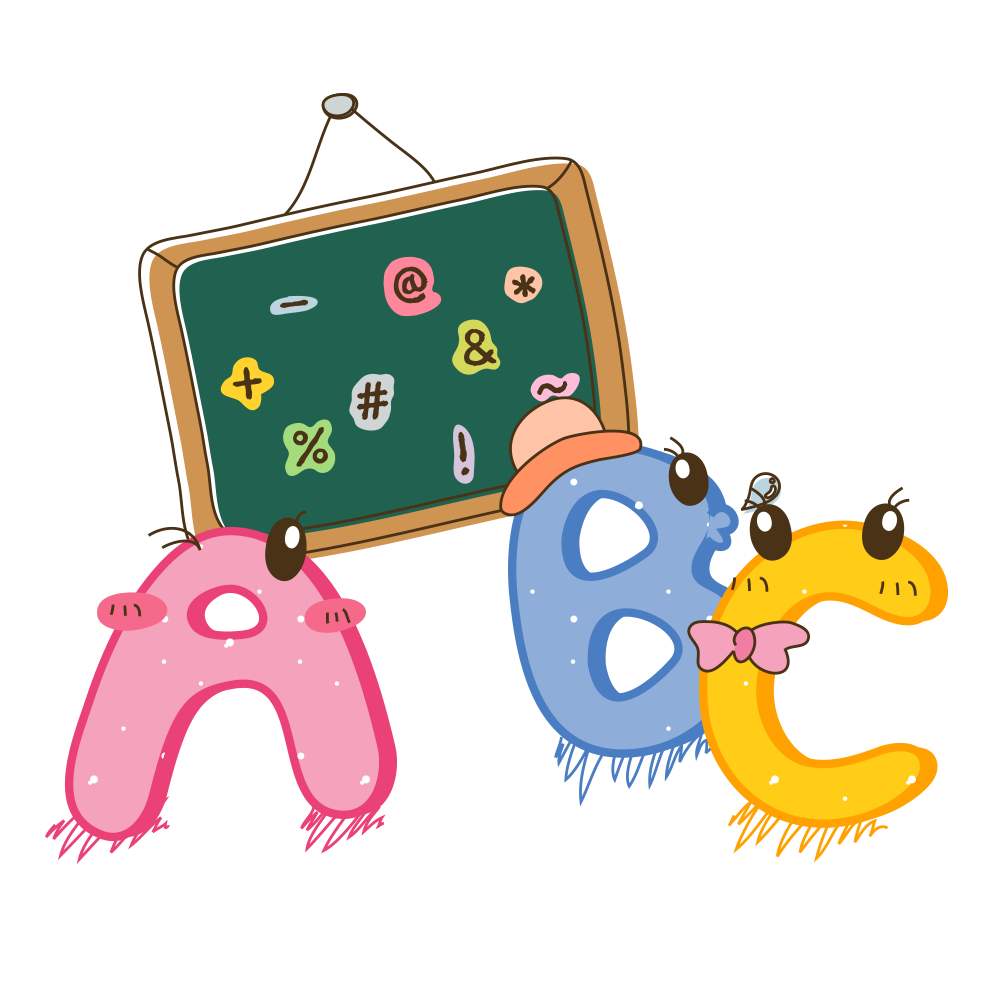
Unit 1 Friendship
Teaching goals:
*语言知识
1. to talk about friends and friendship, and interpersonal relationship
2. to practise expressing attitudes, agreement and disagreement, and certainty
3. to master some sentences about giving advice
4. to learn to use the Direct Speech and Indirect Speech(1): statements and questions
5. to learn about communication skills
*语言技能和学习策略
1. to develop listening skills by doing exercises in listening task
2. to develop speaking skills by finishing the speaking task and other activities like discussion and oral practice
3. to develop reading skills through the reading materials in this unit
4. to learn to write a letter of advice
*文化意识
1. to know about friend and the real meaning of friend
2. to learn how to get along with others
*情感态度
1. to arouse the interest in learning English
2. to learn to express their feeling of friends and friendship
Teaching key points:
1. how to improve students’ speaking and cooperating abilities
2. learn to use the Direct Speech and Indirect Speech(1):statements and questions
3. master some words and expressions
Teaching difficult points:
1. train the students’ speaking, listening, reading and writing abilities
2. how to improve students’ cooperating abilities
Teaching methods:
Student-focus approach and task-based approach
Learning methods:
Cooperative study
Teaching aids:
Computer
The First Period (Warming up &Speaking)
Teaching aims:
1. to know about different kinds of friendship
2. to learn some words of describing friend and friendship
3. to master some useful words and expressions
Teaching methods:
1. discussing
2. cooperative learning
Teaching materials: Warming up
Teaching procedures:
Step One: Leading-in
1. Free talk: Something about friend and friendship
Ask the Ss to describe one of their friends----their appearance, personality, hobbies, etc.
Qs: What’s your friend like?
What does he/she like to do in his/her spare time?
What personality does he/she have?
Step Two: Discussion
1. Writing the following statement on the blackboard
We all agree that to have a good friend , you need to be a good friend.
1. Ask the Ss:
What do you think of this statement and how can you be a good friend?
Let the Ss express their views
3. Have the Ss get into groups of four to list some qualities of a person they would like as a friend.
Ss may list: honest, friendly, open-minded, generous, helpful, patient, good-tempered, trustworthy, careful, full of love, caring, responsible, interesting, brave, easygoing, outgoing, warm-hearted, kind, selfness, tolerant, intelligent…
4. Have a member of each group report on what their lists have and list them on the blackboard
5. Ask the class whether or not they agree with all the qualities listed
Step Three: Doing the survey and explanation
1. Have the Ss do the survey in the textbook and let them work out their score.
2. Teacher explain each item
Question 1 deal with how thoughtful you are towards others. The scoring reflects your concern for others. So one point for A gets the lowest score because it is the most selfish response. B get the highest score because it show a concern for your friend as well as your wish to go to see a film. C gets a slightly lower score because although it shows you want to go with your friend ( because you change the plan), you do not help your friend.
Question 2 is concerned with fairness. A gets the lowest score because you are not giving your friend another chance to behave better this time. B gets a higher score because you let your friend borrow the camera again. This shows kindness and forgiveness or the trouble you had when it was returned broken. But you are not balancing his heeds against your own. That is why C gets the highest score. You are showing your friend that you will trust him/her with the camera again but this time you are giving him / her rules in case it gets broken.
Question 3 deals with your concern for others. A get the lowest score because you would put anything else that needed to be done aside and concentrate only on your friend. This is not responsible. You have things that you need to do. Of course your friend is important but not more important than you responsibilities. B gets a higher score because it shows some concern for your friend and some understanding that you have important things to do too. But it does not show any real interest in his / her problem. C get the highest score because it not only shows concern for your friend but a recognition that you have responsibilities too.
Question 4 is concerned with responsibilities to a friend. A provides the correct amount of responsibility to your friend. You recognize that it was your fault and will put it right and pay for the damage. So it gets the highest score. B provides some understanding that you are responsible. You put the situation right but you do not pay for the damage yourself. So it does not get the highest score. C gets the lowest score because you expect your friend to pay for your mistakes even though you were doing your friend a favour.
Question 5 is concerned with honesty. If you let your friend look at your paper or somebody else’s paper, you are helping them to cheat. That is not honest, so answers A and C get no marks. But it takes courage to tell your friend that they should have studied and that they cannot look at your paper. That is also the honest answer. So you get 6 points for B, which is more than any other in the quiz.
Step Four: Language points
Teacher explain language points with some slides
1. add v.
1) to put together with something else so as to increase the number, size, importance, etc. 增加,
添加
eg. Please add something to what I’ve said, John.
2) to join numbers, amount, etc so as to find the total
eg. Add up these figure for me, please.
常用结构:
add up / together sth. 把…加起来,合计
add sth. to sth. 把…加到/进
add to (=increase) 增加了…
add up to 合计,共计
add in 包括…,算进
1. pay to get it repaired 花钱让人去修理
2. upset adj. worried; annoyed 不安的;使心烦意乱的
v. cause to worry, to be sad, to be angry, not to be calm, etc. 使不安;使心烦意乱
eg. He was upset when he heard the news.
His cheating in the exam upset his teacher.
4.ignore vt. to pay no attention to sth. 忽视;对…不予理睬
eg. Ignore the child if he misbehaves and he’ll stop soon.
ignorant adj.无知的;不知的 ignorance n. 无知;愚昧
5. calm vt. to make sth./ sb. become quiet 使镇静;使平静
adj. not excited, nervous or upset 镇静的;沉着的
calm down 镇静;平静
calm down sb.=calm sb. Down 使某人镇静
sb. calm down(vi.) 某人平静下来
eg. The excited girl quickly calmed down.
He took a few deep breaths to calm himself down.
1. have got to do sth.(口语)=have to do sth. 不得不做某事;必须做某事
eg. Since you’re no longer a child now, you have got to make money to support the family.
*have got to在变疑问句或否定句时,不再另加助动词,而have to则须加助动词do.
have got to前不用情态动词,而have to前则可以。如:
eg. Have you got to writ an assignment for your teacher?
1. 7. be concerned about / for : be worried about
eg. We’re all concerned about her safety.
1. cheat vt.
1) to act in a dishonest way in order to win 欺骗;作弊
eg. Any student caught cheating will have to leave the classroom.
2) to take from (someone) in a dishonest way 骗;骗取
eg. They cheated the old woman (out) of her money by making her sign a document she didn’t understand.
1. 1) an act of cheating 作弊行为
2) one who cheats 骗子
Step Five: Speaking
1. Get the Ss to work in groups of 4.
2. Ask the Ss to use the questionnaire in Warming up as an example and discuss about designing questions.
3. Follow the steps in this part and start the discussion like this:
A: Now let us design a questionnaire to find out what kind of friend one is.
B: OK. First we must think of four questions and three possible answers to each question.
C: What about the first question? Have you got one in mind?
D: Suppose your friend has taken away your book by mistake. What will you do or say to him / her?
…
4. Teacher go around in the classroom and check their discussion.
Step Six: Assignments
1.Ask Ss to consider the following question;
What is / are the most important quality / qualities that a friend needs to have?
2. Prepare for Reading
The Second and Third Period
( reading and language points)
Teaching aims:
1. to know about the story of Anne’s Diary
2. to promote the Ss’ abilities of reading comprehension
3. to learn about the following words and expressions:
radon; list; go through; hide away; set down; a series of; outdoors; crazy; spellbound; on purpose; dare; happen to do sth.; It’s the first time that…
Teaching methods:
1. reading and discussion
2. cooperative learning and speaking
Teaching materials: Reading, Comprehending
Teaching procedures:
Step One: Leading-in
Ask their opinions on the question mentioned in the assignment of last period.
Step Two: Pre-reading
Let the Ss think about the questions in Pre-reading, and express their own views to the whole class.
Step Three: Reading
1. Ask the Ss to look at the pictures and the heading, guess what the text might be about.
2. Get the Ss to skim the passage and answer the following questions:
What’s Anne’s best friend?
What does her diary mainly talk about?
(1. Anne’s best friend is her diary. 2. It’s about Anne’s feeling of hiding away. She especially missed going outside and enjoying nature.
1. Let the Ss read the passage and discuss the following questions:
1) Imagine what it might be like if they had to stay in their bedroom for a whole year. You could not leave it even to go to the WC or get a cup of tea. How would they feel?
2) If you are only allowed to have five things with you in the hiding place because there is very little room, what would you choose?
3) Try to guess why the windows had to stay closed.
4) Guess the meanings of the word “crazy” and “spellbound” according to the context.
Step Four: Discussing the style
Ask the Ss:
1. What do you think is the purpose of this passage? Why did Anne write it?
2. Do you think it is successful? Do you understand Anne’s feelings?
3. What is Anne’s tone? In other words, is the author angry, sad, happy or thrilled?
4. What is Anne’s point of view? Do you agree with it? If so, why? If not, why not?
Step Five: Listen to the text and comprehend it
Step Six: Language points
1. go through
1) to examine carefully 仔细阅读或研究
eg. I went through the students’ papers last night.
2) to experience 经历;遭受或忍受
eg. You really don’t know what we went through while working on this project.
2. hide away
3) vi. to go somewhere where you hope you will not be seen or found 躲避;隐匿
hide away +地点
eg. The thief hid away in a friends’ house for several weeks after the robbery.
4) to put or keep sth. /sb. in a place where they / it can’t be seen or found 藏;隐蔽
hide away sth. / hide sth. away
eg. Why do you hide your thoughts away from me?
3. set down
5) write down 写下;记下
eg. I’ll set down the story as it was told to me.
6) put down 放下;搁下
set down sth. /set sth. down
eg. He set down a basket on the ground.
4. series n.(单复数同形)
a series of 一连串的;一系列的
5 .crazy adj.
7) mad, foolish 疯狂的;愚蠢的
It is crazy of sb. to do sth. = sb be crazy to do sth.
eg. It’s crazy to go out in such hot weather.
8) wildly excited; very interested 狂热的;着迷的
grow / be crazy about sb. / sth.
eg. The boys are crazy about the girl singer.
9) like crazy 发疯似的;拼命地
eg. He talked like crazy; I couldn’t understand what he said.
6. I wonder if it’s because I haven’t been able to be outdoors for so long that ….
*I wonder if / whether…
eg. I wonder if you can help me?
*It’s because …
it is 后的表原因的从句中,只能用because来引导, 不能用since或as.
eg. Why did you go to school on foot?
It is because my bike had broken.
7. spellbind v. to hold the complete attention of 吸引人,迷人;使入迷
eg. The children watched spellbound as the magician took rabbits from his hat.
1. stay v. to continue to be in a particular state or situation
系动词,表是状态。后跟名词或形容词,不能用于被动语态和进行时态。
eg. He stayed single all his life.
10. on purpose
1) 故意地 (反义:by chance / accident)
eg. I think she lost the key on purpose.
2) on purpose to do sth. 为了要…而特地
eg. He went to town on purpose to sell one of his paintings.
1. far adv. “过于;…得多” ,表示程度,经常与too或形容词、副词的比较级连用。
eg. She speaks English far better than I.
This room is far too warm.
cf. very, much, far
1. dare 1) modal. v. 多用于否定句、疑问句、条件状语从句、whether (if)等名词性从句或有否定意义的句中,后接动词原形。没有人称和数的变化,其时态只有现在时和过去时。否定式在其后加not.
eg. How dare he say such a word!
If you dare do that again, you’ll be punished.
2) vt. 敢,胆敢。有人称、数和时态的变化。在否定句和疑问句中,dare后的to可保留也可省略。
eg. I wonder how he dare to day such words.
12.happen to do sth.
It so (just) happened that…
不能用于进行时态。
eg. I happened to be out when he came.
= It so happened that I was out when he came.
13.It’s the first time that…
eg. It is the first time that I have seen the sea.
Step Seven: Comprehending
Get the Ss to do the exercises in this part.
Step Eight: Consolidation
Listen to the text again to appreciate it.
Step Nine: Assignments
1. Read the key sentences in the text
2. do the exercises on WB (Page 41-42)
The Fourth Period (Listening)
Teaching aims:
to train and develop listening skills by listening to the listening exercises in this unit
Teaching methods:
Listening and speaking
Teaching materials: listening parts on Page 6 and Page 41 and Page 43
Teaching procedures:
Step One: Revision
Check the answers to the homework
Step Two: Listening
1. Listen to the exercises on Page 6
2. Guess the words by listening to the tape and write them down
Step Three: Listening to the passage
Fill in the blanks on Page 41
Step Four: Speaking
Listen to the tape and discuss questions in groups of four, express your own views.
Step Five: Listening task
1. Discuss with the Ss whether they always do what their parents tell them.
2. Have the Ss listen to the passage.
3. Fill in the table
4. Work in pairs to give some advice to Anne
5. Do the exercises on Page 42 ( Ex 1,2)
6. Revise the Object Clause
Step Six: Assignments
The Fifth Period (Discovering Useful Structures)
Teaching aims:
Let the Ss use the Direct Speech and Indirect Speech
Teaching methods:
1. discovery learning
2. cooperative learning
Teaching materials: Page 5
Teaching procedures:
Step One: Revision
1. Check the homework with the Ss
2. Revise the Object clause
Exercise: Rewrite the following sentences.
1. I go to school by bike . ( He said…)
2. Will you forget to do your homework? (Mary asked him…)
3. When did you come here? (They asked me…)
4. What has he said? ( Do you know…)
5. Anne is watching TV now. ( Mother told me …)
Step Two: discovering useful structures
1. Present some sentences for Ss
1) My friend says, “ I will come here tomorrow?”
如果此时此地,你来转述,应该说:
My friend says she / he will come here tomorrow?
如果时间变了,地点不变,你来转述,应该说:
My friend said she / he would come here the next day.
如果地点变了, 时间还是今天,你来转述,应该说:
My friend sayd she / he will go there tomorrow.
如果时间地点都变了, 你来转述,应该说:
My friend said She / he would go there the next day.
如果由别人转述,时间地点都变了,应该说:
He/ She said he /she would go there the next day.
*使用直接引语和间接引语要注意具体语境。
2)“Do you go to the park yesterday?” He asked me.
He asked me if / whether I went to the park the day before.
3) Kate said to John, “What’s your favourite food?”
Kate asked John what his favourite food was.
1. Get the Ss to have a look at Part1 in“Discovering useful structures” and sum up this grammar point.
人称、时态、指示代词、时间状语、地点状语等的变化。
Step Three: Practice
1. Do the first tow sentences in Part 2 as examples.
2. Check the answers together.
3. Wb, Page 42, 43 (Individual, Groups)
4. 2. Prepare for Reading on Page 44
Step Four: Assignments
The Sixth Period ( Reading)
Teaching aims:
1. to learn about friendship in Hawaii
2. to promote the Ss’ abilities of reading comprehension
3. to learn about the following words and expressions:
way; the second important; It’s believed that…; in peace; those who …; etc.
Teaching methods:
1. reading and discussion
2. cooperative learning and speaking
Teaching methods: Reading (Page 44)
Teaching procedures:
Step One: Leading-in
1. Ask the Ss if they can think of any place in the world where Chinese and Western cultures live side by side.
( Hong Kong, Macao, Singapore, the Philippines, San Francisco, etc.)
Step Two: Reading
1. Get the Ss to read the passage and try to finish the table in Ex1.
2. Read the passage carefully again and discuss the questions in Ex2.
3. Report their discussion
4. the way to do sth. / the way of doing sth.
5. the second most important
Step Three: Listening to the text and comprehend it
Step Four: Language points
the second + adj.(最高级)
the third + adj. (最高级)
eg. The Yellow River is the second longest river in China.
China is the third largest country in the world.
1. to enjoy the land = in order to enjoy the land
eg. To make the w8th Olympic Games the game ever, Beijing will make several changes.
* to do和 in order to do可以置于句首、句末,而 so as to do只能置于句末。
1. Indeed, Hawaii is a place where ….small communities.
2. It’s believed that the islands can be a paradise ….
It’s believed that …= People believe that …
eg. It’s believed that they arrived more than 30,000 years ago.
1. in peace
2. … they are really talking about all those who live on the islands.
those who…=people who … “凡…的人”
eg. The teacher praised those who had done good deeds.
We find it our duty to help those who are in trouble.
1. Living in peace, Hawaiians has developed …
现在分词短语作原因状语,相当于 As they are living in peace.
1. Perhaps this is how most visitors will remember their new friendship.
Step Five: Listening to the text and enjoy it
The Seventh Period ( Speaking Task and Writing)
Teaching aims:
1. to develop Ss’ speaking ability and learn to express their own views
2. enable Ss to write a letter of advice
Teaching methods:
1. tasked-based learning
2. speaking
Teaching procedures:
Step One: Speaking task
Task One: Ex1 (Page 45)
1. Get the Ss to work in pairs, have them read the situations and choose one to discuss.
2. Ask the Ss to present their dialogue.
Task Two: Ex2 (Page 45-46)
1. Ask the Ss to look at the pictures.
2. Work in groups of four and talk about whether they are doing is cool or not.
3. Try to express their own views to the whole class.
4. Get the S to read the letter on Page 7 and understand it.
5. Ask the Ss to work in pairs and talk about how to answer the letter.
6. Write the letter in reply down.
7. Read the proverbs carefully.
8. Write a passage to express their own opinions.
9. Fill in the form in Sum up (Page 8)
10. Fill in the form in Checking yourself (Page 47)
Step Two: Writing
Task One: Ask the Ss to write a letter of advice
Task Two: Ask the Ss to write a passage about their opinions on friend and friendship
Step Three: Assignments



